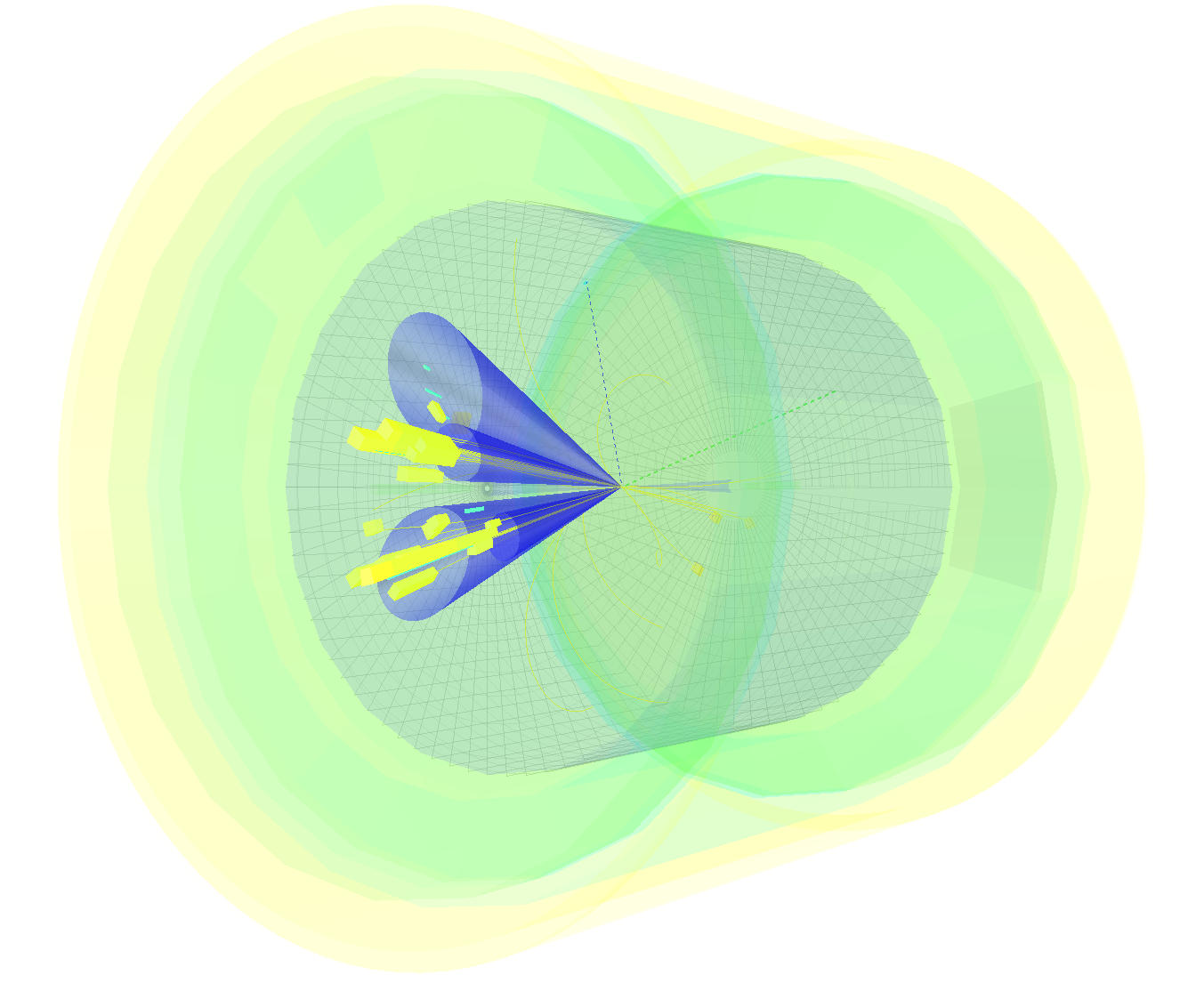 This paper, which appeared on the pre-print archive (arxiv.org), was the last collider physics project I started while in my previous role. It took some months to finalize the paper, finish editing it, etc. I note it here not because it marks a critical step in my research program - in fact, my program is now shifted to particle astrophysics. However, it was notable because the co-authors are two high school students, two undergraduates, a graduate student, and me. I hope this indicates that I am very excited to identify and cultivate mentoring and research opportunities with students at any level. I also hope this shows that it's possible for students with less experience to contribute in strong and meaningful ways to a work such as this.
This paper, which appeared on the pre-print archive (arxiv.org), was the last collider physics project I started while in my previous role. It took some months to finalize the paper, finish editing it, etc. I note it here not because it marks a critical step in my research program - in fact, my program is now shifted to particle astrophysics. However, it was notable because the co-authors are two high school students, two undergraduates, a graduate student, and me. I hope this indicates that I am very excited to identify and cultivate mentoring and research opportunities with students at any level. I also hope this shows that it's possible for students with less experience to contribute in strong and meaningful ways to a work such as this.
I wish to note that the final inspiration for assembling a team like this came from my book co-author and colleague, Dr. S. James Gates, Jr. You can learn more about his multi-decade strategy of including secondary-school students in real physics projects in the Symmetry Magazine article, "Jim Gates Gives Back".
One of the high school students developed the overall event selection strategy and helped to study simulated collisions (like the one pictured above) to determine what qualities might be useful in distinguishing categories of particle collisions. The other high school student developed the use of missing momentum. One of the undergraduates developed our approach to particle jets and the other laid the foundations for selecting muons as a means to reject classes of collisions. The graduate student studied the effect that changing our assumptions about the proton has on the outcomes.
The science behind this paper is interesting, of course. The U.S. is moving to construct an Electron-Ion Collider (EIC) at Brookhaven National Laboratory in New York. This machine would be active in the 2030s, and likely into the 2040s. What to do with the machine after? A small community of physicists has been exploring what would happen if you replaced the electron accelerator with a muon accelerator.
Muons are like electrons, but 200 times heavier and unstable. A muon lives, when held at rest, only 2 millionths of a second. However, being so much heavier it's possible to accelerate muons to much higher energies than electrons, even using the same sized accelerator. This could transform an EIC - a machine designed for precision 3-D mapping of the proton - into a high-energy machine capable of producing the heaviest particles in nature. This includes the Higgs particle.
We explored the potential to not only produce the Higgs but to study its sought-after decay to charm quarks, the third-heaviest building block of nature.
I invite you to explore this paper.
Higgs Production and $H^0 \to c\overline{c}$ at a Future Muon-Ion Collider
Pavan Ahluwalia, Justine Choi, Simba Masters, Austin Mullins, Noah Randall, and Stephen J. Sekula.
e-Print: 2211.02615 [hep-ph]
